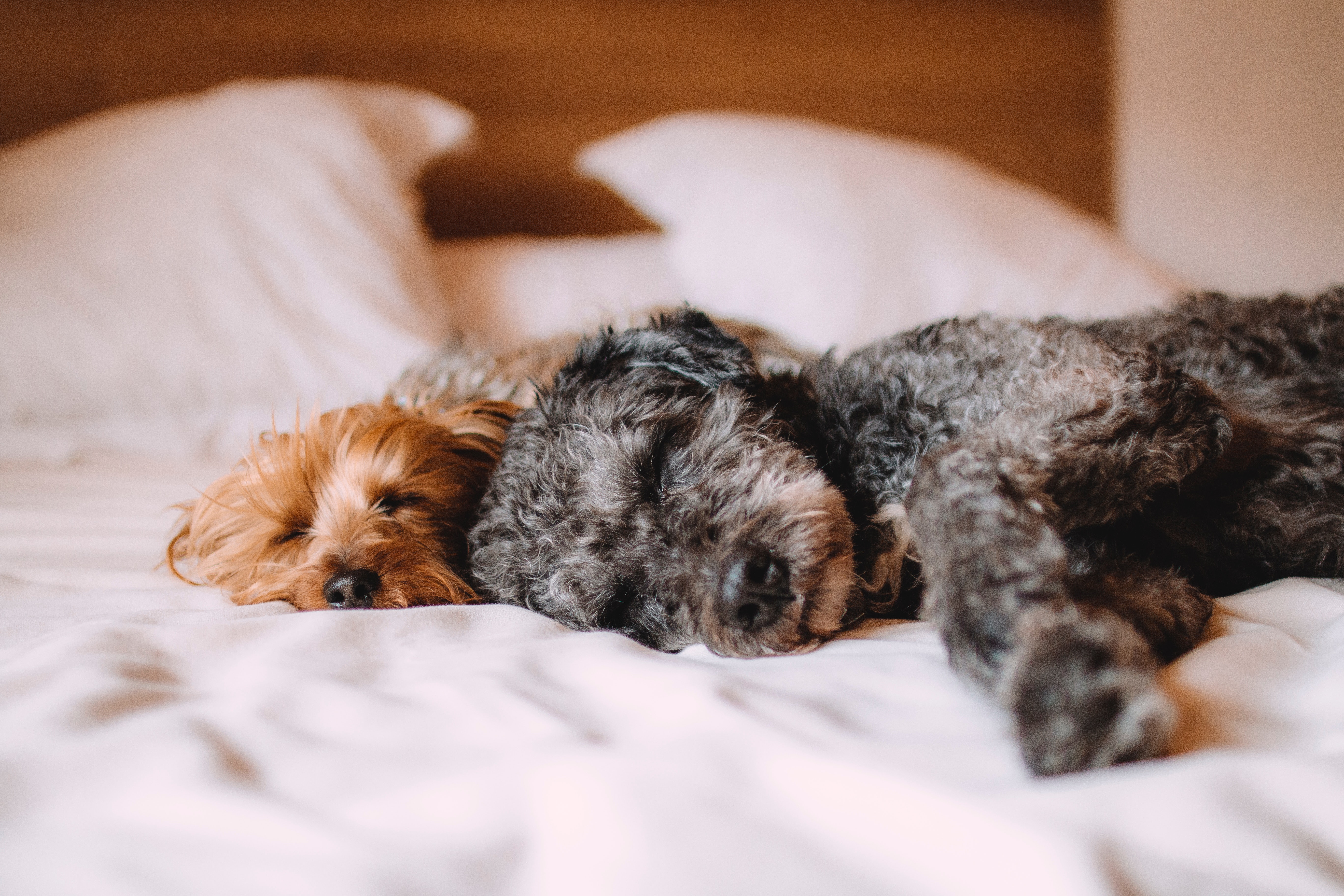The cold weather is upon us, which means plenty of food, fun, and family time. It also means blistering cold winds and rainy nights. While this may be fine and well for people, it may not be ideal for your furry friends, especially if you’re looking to keep them sleeping.
To get the most out of your pup’s sleep schedule during the winter, remember:
Keep Them Inside
This may seem like a no-brainer, but keeping your pet indoors is the first line of defense against cold sleepless nights. While there is nothing wrong with having an “outside” dog, dogs are just as susceptible to cold weather as humans. In fact, dogs that are adverse to the cold weather (ex. smaller breeds or those with thinner coats) begin to feel uncomfortable when temperatures fall below 40° F. When you begin to reach the 20’s, all dogs can be affected by ailments like frostbite.
If you’re concerned with housetraining (or lack thereof) and winter, start your training earlier by autumn at the latest in preparation for winter. However, if you’re already in the midsts of the snowy season, you can still provide consistent training to get your furry friend ready for cold nights provided that the wind and snow does not disrupt your training time.
Be Mindful of Your Pet’s Sleeping Space
After you’ve gotten your furry friend indoors, they should be fine sleeping anywhere, right?
Well, not exactly.
Treat your dog as if you were sleeping: with warm blankets and bedding. Regardless if your dog is still in the kennel or sleeping in your bedroom, ensuring that they have proper bedding that is elevated from cold tiles or floors is a must for comfort. In addition, while it may appear ideal to set their bed near a heat source, bear in mind how close they are. Worst case scenario, your dog might be tempted to get closer (especially if it’s a heater or fireplace) and burn themselves on the source. Just like you did when you first brought them home, be mindful of your surroundings.
Know Why Their Sleep is Changing
Dogs typically sleep more during the wintertime than in any other season as a result of light exposure. During these months when light is sparse, your dog’s melatonin (the hormone related to sleep) levels go up while their serotonin (the neurotransmitter that regulates mood) conversely goes down. The resulting shift in chemicals in the brain can cause more sleep along with more lethargy.
This is not to say that it should be a cause for immediate concern (though there have been some associations with Seasonal Affective Disorder and dogs during the winter), but it does mean less playtime with your pup. If you’re looking to regulate their sleep during the day, consider increasing their light exposure naturally by taking them outside during the brightest daytime hours, keeping their bed or kennel near the window, or using artificial lights that closely resemble sunlight. This process could slowly invert the aforementioned melatonin-serotonin levels and provide your dog with more energy to play and explore.
This holiday season, make your dog’s tail wag with glee by giving them the best sleep possible. By keeping them inside, providing them with a safe and comfortable bed, and keeping an eye on their nap times, you make snowy nights feel as comfortable as sunny days.
Sources:
https://www.petmd.com/dog/care/how-cold-too-cold-dog
https://www.therapydogs.com/dog-care-winter-months/
https://topdogtips.com/do-dogs-sleep-more-in-winter/



